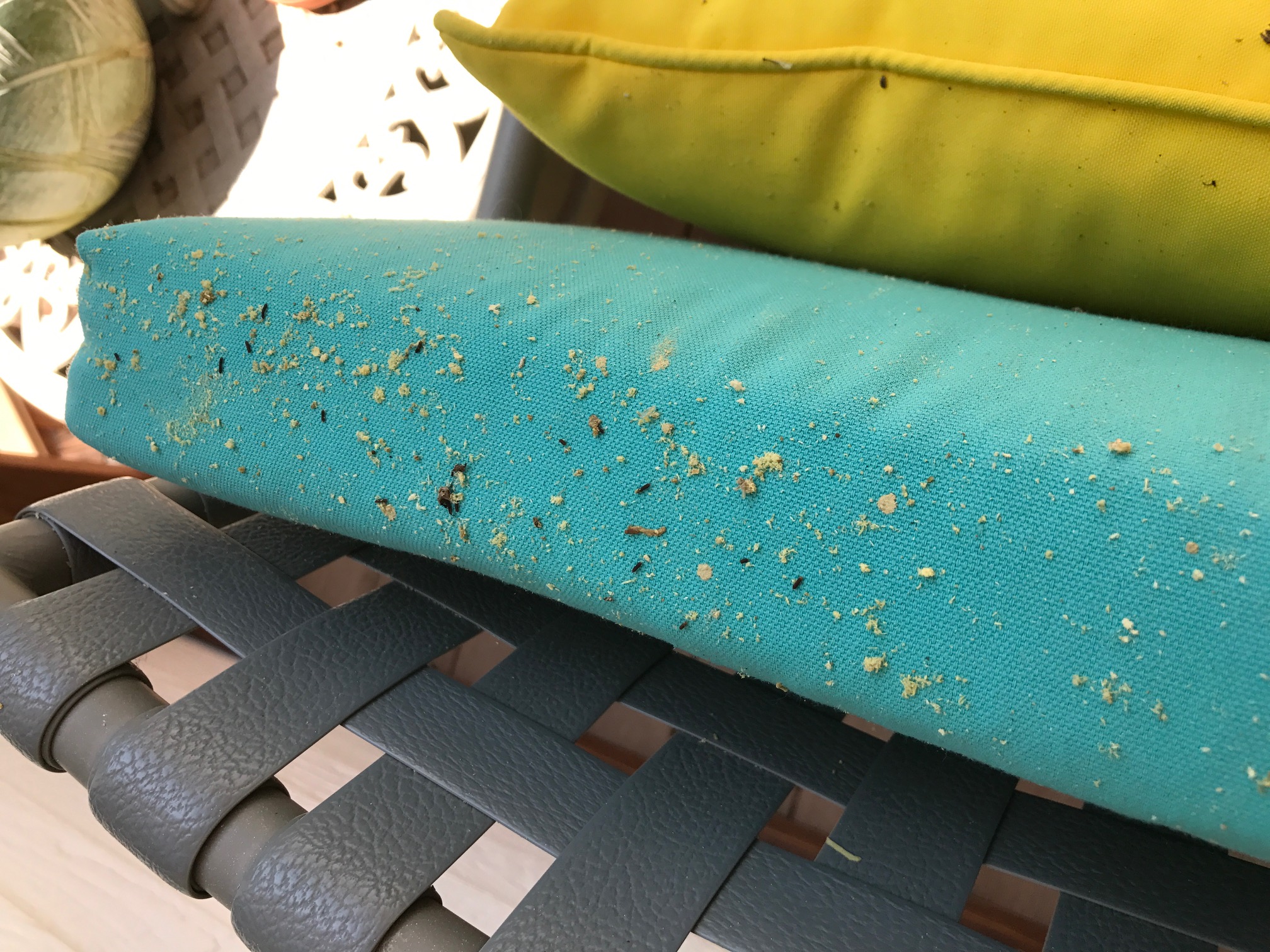.jpg)
Catch of the Week: Carpenter Bees in West Des Moines
September 12, 2018
Our home pest control experts recently took care of a carpenter bee issue in West Des Moines. These insects can be hard to spot since they typically travel alone, but should be taken care of right away to prevent damage. Call a professional bee exterminator to safely remove the pest problem and eliminate your chances of a painful sting. Check out our carpenter bee removal techniques below!
Where Do Carpenter Bees Live?
This bee species is found mostly in the southern part of the United States, but has worked its way north and can now be commonly found in the southern half of Iowa. Like many insects, carpenter bees are named based on where they make their nest. When females are ready to lay their eggs, they create a nest by drilling a ½ inch hole into wood. Once inside the plank, the bees will excavate tunnels that follow the grains of the wood.
Since female carpenter bees chew up the wood that makes up their nest, they prefer untreated softwoods, such as redwood, cedar, cypress and pine. Wood that is painted or stained is less likely to be damaged. The most obvious signs of carpenter bee destruction are the small, perfectly round holes that are the opening to their nest, or the tiny wood chips or sawdust that is discarded while they excavate their tunnels.

Once the tunnels are created the carpenter bee will search for food to give her larvae. When she lays her eggs she will leave behind a pollen and nectar mixture, then build a barrier made from cemented wood chips. She will make 6-10 cells, and once the larvae grow into adults they will break down the partition. The bees will live in these tunnels throughout the winter, and some of the offspring will come back to the same hole the following year and create a new tunnel inside the wood, causing even more damage.
During this process of finding a nest, the male carpenter bee will hover around the drilled hole and behave aggressively to protect his young, however, he is harmless and does not have a stinger. Like most stinging insects, the females possess the stingers and will inflict a painful sting, but they will rarely act unless they are evoked.
Step-by-Step Carpenter Bee Removal
Our bee removal technicians know specific tactics to get rid of any species of bees and wasps, and we’re going to go into detail on carpenter bee removal techniques. As shown in the video, the first step is to inject a puff of aerosol inside the hole; this will take care of any larvae or adult bees burrowed inside. Next, for a better long-term solution, we spray an insecticide around the outside of the nest to ward off bees that come back to the hole. The final step is to seal the hole ensuring bees do not come back and attempt to reuse the nest. The most common solutions are wood putty or a cork to plug the small opening.
To prevent carpenter bees from wreaking havoc on a deck or wood structure around your home, consider staining or painting any outdoor wood. If you love the natural wood look, consider choosing a regular insecticide treatment and make a habit of inspecting your deck for sawdust chips or holes in the wood.
Carpenter Bee vs. Bumble Bee
The carpenter bee is oftentimes mistaken for its closest cousin, the bumble bee. Although these types of bees look very similar and are about the same size, we can point out a few distinctions to tell them apart.
- Carpenter bees are solitary creatures, meaning they prefer to travel and make their nests alone. Bumble bees are a social species and live in colonies.
- If you do spot a carpenter bee nest, it will be carved out of a piece of wood like we mentioned. Colonies of bumble bees, however, prefer to live in existing shelters or in the ground.
- Bumble bees are known for their fuzzy yellow and black abdomens, whereas carpenter bees’ upper abdomen have a bare and shiny black appearance.
- Looking at their stinging habits, bumble bees are much more aggressive than a carpenter bee. A female carpenter bee will only sting as a last line of defense because oftentimes a sting can kill her.
Des Moines Bee Control Services
If you think you have bees near your home, contact a pest control professional for safe and effective bee removal. Reach out to Preferred Pest Control to take care of the problem and prevent future infestations. Schedule an appointment online or call today at (515) 415-5550.
Related Articles You Might Like: